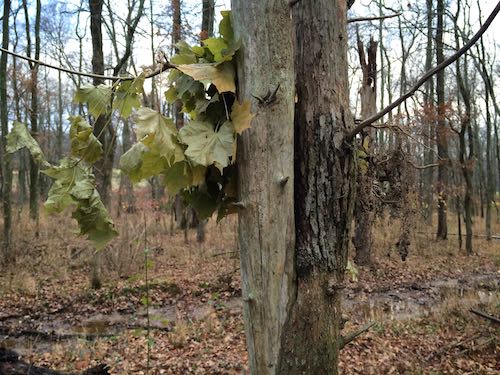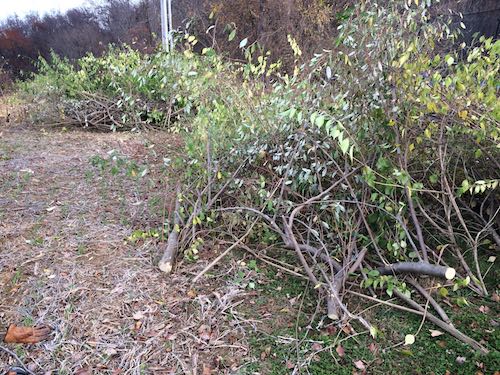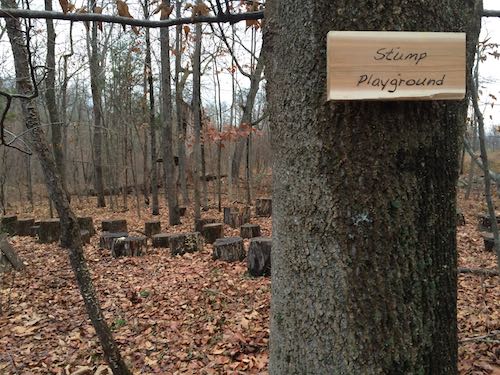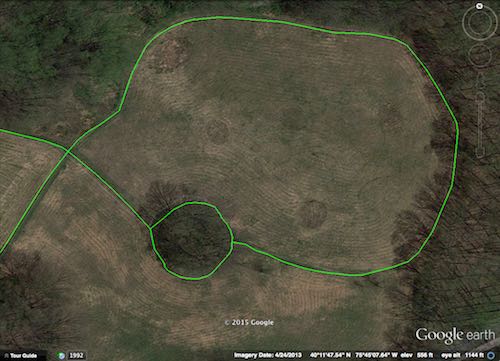Crow’s Nest: Stewardship Briefs
By Daniel Barringer, Preserve Manager
Managing each invasive plant has its own season, and fall is a great time to identify a few species that stand out now. If you walk around the woods here and see clumps of seedlings stuffed into the crotches of larger trees, these are likely Norway maples (Acer platanoides) that staff or volunteers have pulled from the forest floor where they aggressively compete for light. We’ve long since removed all of the large, seed-producing trees from the preserve although there are plenty in people’s yards around. We pull the seedlings for a couple days each year and hang them off the ground so that they don’t re-root.
Norway maples stand out in the fall because they are still green when most other trees have turned color, and later they are still yellow when most other trees have lost their leaves entirely. Their leaves are strongly five-lobed (sugar maple has only three large lobes) and if you pluck a Norway maple leaf during the growing season the sap that oozes from the petiole (or even the veins of the leaf, if cut) is latex-white (other maples have clear sap or frothy, but not thick and white).
Other species that are easy to identify and manage in the fall are oriental bittersweet (Celastrus orbiculatus) which hold onto yellow leaves late into fall and have distinctive red fruit inside yellow capsules that split open. Shrub honeysuckles are also keep green leaves late into fall and Japanese honeysuckle is evergreen or semi-evergreen and easy to pick out all winter. So even as we wrap up mowing season we have plenty of projects to do at the preserve.
Above is a pile of shrub honeysuckle and autumn olive that have been cut and piled waiting for the chipper.
Cody used his wood-burner tool to create small signs in the play area behind the visitor center (above). I made a couple tic tac toe games on stumps near the kids’ play area—smooth river stones vs. rough native rock.
I have been using Google Earth (TM) to map our ash trees along roads that will be affected by Emerald Ash Borer, and so have spent a lot of time looking at the aerial images in it. I like this one taking early spring of 2013 because it shows a bit of our management technique: when we mow the meadows like this one around the Chief’s Grove we leave small portions un-mowed that show up as the darker circles in the field north of the large circle of the Grove.
Our goal is to create a mosaic of different habitats so that not all of the field is mowed at once; there is still some cover left in the field even as overall the meadow is maintained as it must be to keep it a meadow. The circles are left in different places each year and some of the meadow at any given time has growth in it older than one season to improve habitat for pollinators by providing structure for eggs and cover from predation. I’m just amazed that this small effort shows up in aerial photographs.





